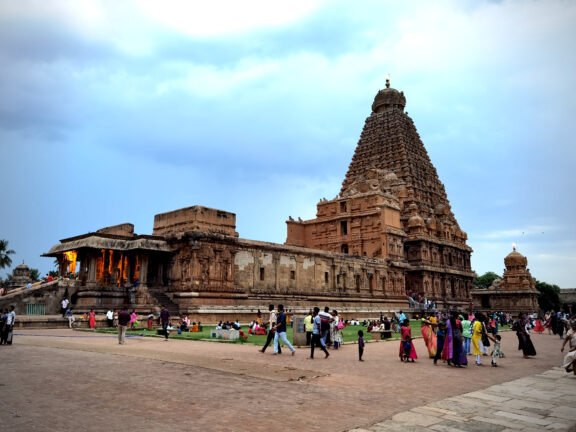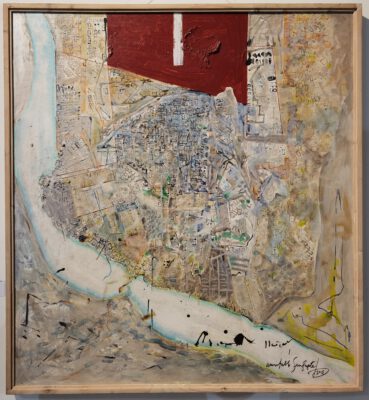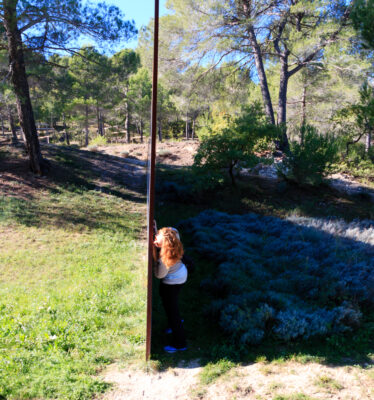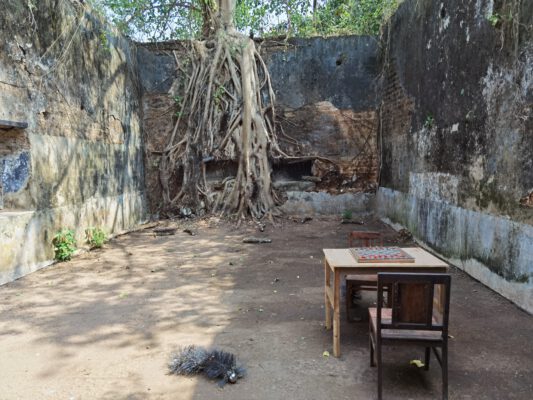Wuring the Chola empire, the layout of Shiva temples was highly formalized. Based on the Agamas and Shastras, the temple was fully developed into a place in space, time and consciousness where the microcosm and the macrocosm mirror each other.
Studying the Irumbai temple as a smaller temple that follows the strict rules of temple construction and serves as a temple for practitioners shows its central role in a cluster of about two dozen temples in the area. It follows the main principles of Vastu, is aligned along the Vastupurushamandala, has a huge water tank, the usual deities are present, it follows the festival calendar and is aligned with the Murugan star. Even this basic description of the central elements gives us a sense of the temple's placement in the larger cosmic context.
When a temple is built, it is never an arbitrary act. A site is chosen and it must be indicated as favorable. Often an unusually friendly encounter with the animal kingdom is such a good sign. The site must then be tested in terms of soil quality, water, energy, orientation and slopes. A time must be chosen according to the star charts. The stars and planets determine the calendar. Rituals must be performed, construction must begin and invocations must follow. The whole process is an interplay between the cosmos, the physical location and the inner world.
Cosmos
Our existence on this planet is embedded in a solar system, which is embedded in the Milky Way, which in turn is embedded in a cluster of galaxies, and so on. With our eyes we can see many of these elements, their movements and patterns. The recurring cycles of certain light elements in the night sky gave life a reference point. This applies not only to human prehistory, but also to the animal world, such as the flight patterns of birds or howling dogs. This sense of the cosmos following a beautiful, complex rhythm makes us realize that there are forces outside of us that are much greater than the surrounding living world. The sky is the seat of the gods. They look down on us and sometimes interact with us. This is the origin of almost all mythologies. Stars are often associated with gods; they come and go in cycles of days, weeks, months, years, centuries...
If we look at the Earth from a distant cosmic position, we can use it as a reference point in this complex system. We could use any cosmic object as a reference point, but on Earth we are blessed with life and consciousness and have the ability to observe and experience. Therefore, it is a good starting point. Understanding that we can observe the interplay of stars and planets from Earth raises the question of how these constellations affect our little planet. Is there something special about it? Are we alone? Are we a playground for a bigger game?
Tattvas
As soon as I realize that my existence on this planet is endowed with the gift of life and consciousness, I become aware of my body. I realize that the body I inhabit is another level of reality. I can control it, I can use its senses, I have experiences through it, it has needs and supports my experiences and thoughts. This physical body with arms, eyes, nose, mouth, ears, skin, hair, legs, feet, hands, organs of pleasure and organs of excretion gives me the inner senses of touch, taste, sight, sound, speech, smell, pleasure, hunger, thirst and pain. The mind is able to synthesize these inner senses: Focus, choice, concentration, structure, thought, meditation, experience and communication. It is the tool that allows us to access higher levels of our existence in terms of spiritual experience. I can experience myself as self; my existence as self is not bound to the physical position of my body. My mind can wander, I can think about things that are present, I have memories, fantasies and imaginations. I can experience myself in relation to others and ask existential questions: Who am I? Where do I come from? Who created me? Where will I go when I die? The blueprint for this world to explore is the system of the 24 Sankhya Tattvas or the 36 Tantra Tattvas. What I have mentioned so far is organized in the Sankhya Tattvas; if we include the realm of higher spirituality, Shiva, Shakti, Purusha, Atma, etc., we are in the 36 Tantra Tattvas.
Elements
When we realize that the cosmos follows a great rhythmic pattern and that our body has access to a very complex system, we can dive deeper and ask what it all consists of. There are five elements: Water, Fire, Earth, Ether and Air. The elements are not to be understood as chemical elements. They are seen as primordial elements with a complex multi-access. Air is in the atmosphere, but it is also the breath of life and holds the power of the wind. Fire is heat and light, knowledge and destruction. Water is liquid, consciousness and the ocean of life. Space is the cosmos, the realm of spirituality, knowledge and sound...
Vibration
Vibration lies at the core of existence. All energy in the macrocosm is ultimately vibration, all life energy is vibration and all elements are vibration. Vibration originates from one point, the bindu. This origin, be it the Big Bang, Shiva's drum or the symbol of the bindu on the forehead, is the point at which everything is held together. This is the origin; it gives us access to the level of immanence. It is beyond what we can experience, beyond science and meditation; it is what we can be aware of but cannot know.
Temple
The extraordinarily complex architecture of temples such as the Chola temples lies in their ability to synthesize all this in one architecture and offer a key to exploring the complexity of our existence. They are designed to be so open that they enable and invite the most diverse forms of spiritual practice. The core of the practice is based on the Vedas. The rituals use symbols from the Vedas to embody wisdom in daily practices.
Visiting a temple regularly creates a deep connection with the cosmic dance in which it is embedded. When thinking about the gods in the Hindu cosmos, it is important to understand that the 300 million, or however many there may be, only superficially represent a polytheistic religion. The underlying thought is that Brahman, the underlying consciousness, reality and creator in its all-encompassing existence, requires the manifestation of that reality to experience itself. Experience is time-based; it has to go through processes and changes and has to go through creation. This is part of everything, and everything is part of everything. If you take something out of everything that is everything, and what remains is everything, and both are everything. We are reaching the limits of our mental capacity here. But from here we must understand that all gods are part of the One; they embody eternal principles, powers, properties, qualities, ideals. Immutable, like the essence of a color perception, an emotion like love, compassion, anger, an ideal like beauty or heroism, or a type like a warrior or a remover of obstacles. These principles are thought of in the form of gods, as the world is a mixture of these principles. I have experiences of these qualities in me; I did not create them; they came together in me. Where do they come from, why do they exist, who created them? In the Upanishads we find a whole hierarchy of gods, one kind building the other kind, level upon level, just like in science we have physical levels, forces, particles and then combinations of these, elements, geology, strata, biology, vegetation, animal life, consciousness. Why should it stop there?
All these elements, if we expand our periodic table of elements, the chemical elements, the tattwas, the pantheon of gods, describe different aspects of our experience. There can be no doubt. The question is whether one is reducible to the other. And I have a feeling that yes, everything is Brahman. The baseline is just a little different. It's not the atom; it's the monad in Western terms. It's not Maya, the illusion of material reality, but consciousness itself. My consciousness is reducible to consciousness; it is the place where everything begins and ends.
Following this description of the extraordinary richness of the world we are given, we experience the coming together of the elements and principles, qualities, attributes, ideals, etc. The image often used is that the gods embodying these elements come to earth to play, to experience themselves, to mingle and interweave, to have fun and laugh, to fight, destroy and build. It is this cosmic dance that Shiva's wheel turns. So if we stay in the image of the cosmic setup, with the stars and planets and the earth at the center as the place where consciousness is present, the descent of the gods is present. They need a place to live and rest, sleep and be accessible. This place is the temple. Looking at a statue of a god in the temple can be a deep contemplation of its qualities. You can connect to the qualities through contemplation. Through contemplation it manifests. You can invite how love is there when you love, or you can try to change. You are suffering, and you seek help by thinking about what might help, and if you think about it long enough, it might manifest. A solution in thinking might come, an emotion might transform, but maybe even something in the world changes. You leave the place of contemplation, return to so-called reality and something has happened. How, I don't know, but what is so absurd about it? This is the core of tantra. By changing your inner world, you can change the outer world, just as the outer world changes the inner world.
The temple follows a calendar of festivals. Great mystical transformations are celebrated during the festivals. The qualities of the gods are evoked through elaborate puja rituals. They are seen as manifested in the bronze statues that are ceremonially carried through the temple. One god is placed in front of another god so that they can see each other, greet each other. But only after they have been gently awakened, bathed, worshipped and fed with sensory impressions such as the smell and taste of fruits and flowers. It is a celebration of joy because we can witness the presence of joy. Millennia of celebration echo off the stone walls that have absorbed the sound and rhythms. The stones have stored the memory of the feet that have walked over them, and statues have collected the millions of touches of the faithful.
The womb chamber, the Garbha Griha, plays a key role. The main deity resides here and only the priest can have direct contact. The priest takes care of the god, wakes him or her up and puts them to bed. Washing is done privately; a curtain is drawn during this time. The offerings of the faithful are later accepted by the priest and passed on to the god by touch. Flowers are placed on the body, scents are lit, mantras are recited. Ultimately, it boils down to the synthesis of sensory impressions through vibration. All vibrations radiate from the womb chamber and are able to mix and integrate the offerings. A connection is made between the pure qualities as celestial entities, their embodiment in the temple, the rituals of the priest, the devotion of the worshippers, the history and memory of the place and the cycle in which everything is embedded.








